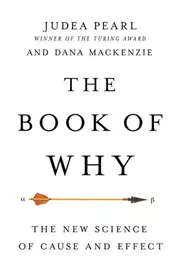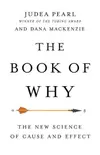

The Book of Why
Ratings13
Average rating3.7
A Turing Award-winning computer scientist and statistician shows how understanding causality has revolutionized science and will revolutionize artificial intelligence
“Correlation is not causation.” This mantra, chanted by scientists for more than a century, has led to a virtual prohibition on causal talk. Today, that taboo is dead. The causal revolution, instigated by Judea Pearl and his colleagues, has cut through a century of confusion and established causality–the study of cause and effect–on a firm scientific basis. His work explains how we can know easy things, like whether it was rain or a sprinkler that made a sidewalk wet; and how to answer hard questions, like whether a drug cured an illness. Pearl’s work enables us to know not just whether one thing causes another: it lets us explore the world that is and the worlds that could have been. It shows us the essence of human thought and key to artificial intelligence. Anyone who wants to understand either needs The Book of Why.
Tags
Genre
Reviews
Popular Reviews
Reviews with the most likes.
To be honest I didn't understand most of statistics formula explained, however insights into use case of causal models and differences were truly amusing.
The field of causality explains how one can quantify direct and indirect effects of causes with the help of formulas and path diagrams. Previously science shied away from naming direct causal relationships, because it was too hard to unpick all the biasing effects that influence studies and data collections. All patterns were named correlations, nothing was causation.
Only random-controlled trials (double-blind, with a control group, careful selection of participants..) are a clean way of experimenting. But RCT studies are expensive and time-consuming, and sometimes would be unethical. And now we live in a world of so much observational (big) data. It would be terrible, if we'd continue to make mistakes based on wrong assumptions about that data. The book explains the methods of causal inference, that help to rid data of hidden distortions (by controlling for confounders).
The reading experience of this book was rather fluctuating. There is a certain arrogance that bleeds through when the author squabbles about this new field that he so clearly helped establish. Then in some sections in the middle the book just drifts too far into jargon, giving up all attempts at stringing the casual popsci reader along (in my opinion). But occasionally the book is very descriptive, explains examples clearly, then it is a delight, and super informative to read. Absolutely a fascinating field.

























